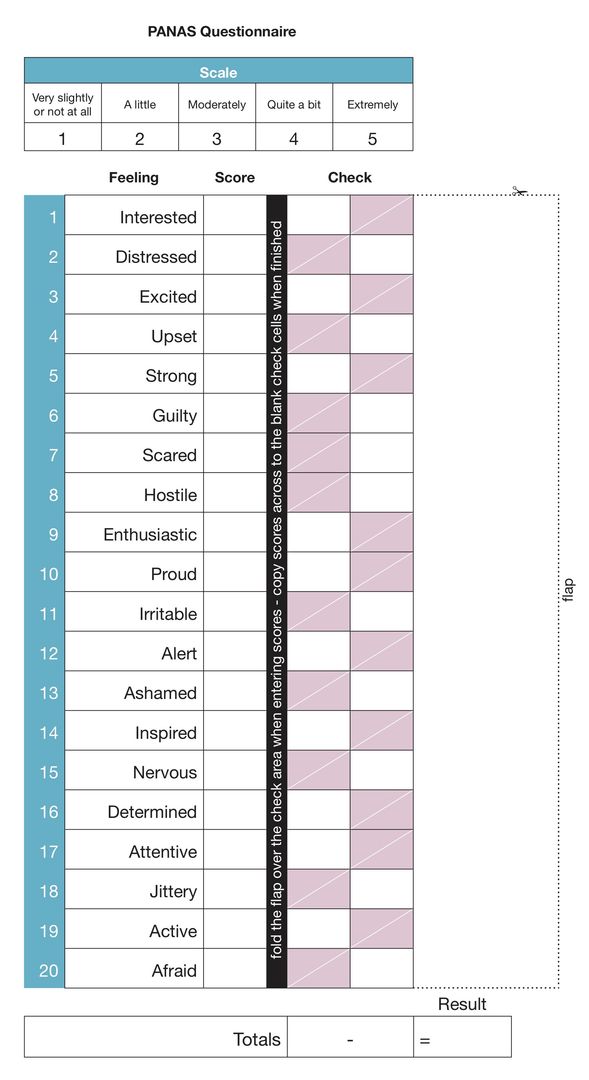Quantifying Sentiment
Our mood can change the way that we feel about our experiences when interacting with technology. Research shows that affective experiences will trigger feelings that cause us to think differently. This is as true when the affect is positive or negative. In this activity you will aim to measure the scale of the affect using a scale of positive and negative words in a simple questionnaire.
Activity
- Make a list of 20 words which describe feelings and emotions. Half of the words should have a positive meaning and the remainder should have a negative meaning.
- Create a five-column table like the one shown below, arranging the positive and negative words in the ‘Feeling’ column so that the positive feelings are alongside the clear boxes in the first ‘Check’ column.
- Cover the ‘Check’ columns with a piece of paper or cut-out a flap from the sheet and fold over.
- Think back to circumstances when you used a digital product or service for the first time, perhaps using some unfamiliar technology.
- Write a score between 1 and 5 in the ‘Score’ column to best describe your feelings on that occasion using the scale provided, or devise your own scale.
- Copy the scores to the blank boxes in the ‘Check’ columns. Add the scores for positive words and subtract the result from the total of the negative words.

The PANAS Questionnaire Form included in the book is licensed under a Creative Commons Attribution-NonCommercial 4.0 International License.
Download PDFScoring
The result should range between 40 and minus 40. A score of zero indicates that your mood was average or neutral. A score below zero indicates a negative mood, feeling sad and depressed, where -40 is a distressing and not at all pleasurable.
A score above zero indicates a positive mood, feeling enthusiastic, active and alert, with +40 indicating pleasurable engagement, high energy and full concentration.
Outcome
This activity should have started you thinking about how your designs can affect the mood state of the people who use them. Rather like the writer of a play, you have the ability to craft your work to influence the emotional state of your audience.
The PANAS test (Positive and Negative Affect Schedule) is a scientifically tested method to estimate the level of affect. It can be applied in user testing to help inform the design process, revealing unintentional negative effects and confirming the positive.
Note
For this activity we asked you to choose your own words and scale for the questions. For the test to be accurate you should probably use the specific words and scale applied in the original research. These are included in Fig.26 of the current edition.
Full reference: Watson, D., Clark, L. A., & Tellegan, A. (1988). Development and validation of brief measures of positive and negative affect: The PANAS scales. Journal of Personality and Social Psychology, 54(6), 1063–1070.
Top